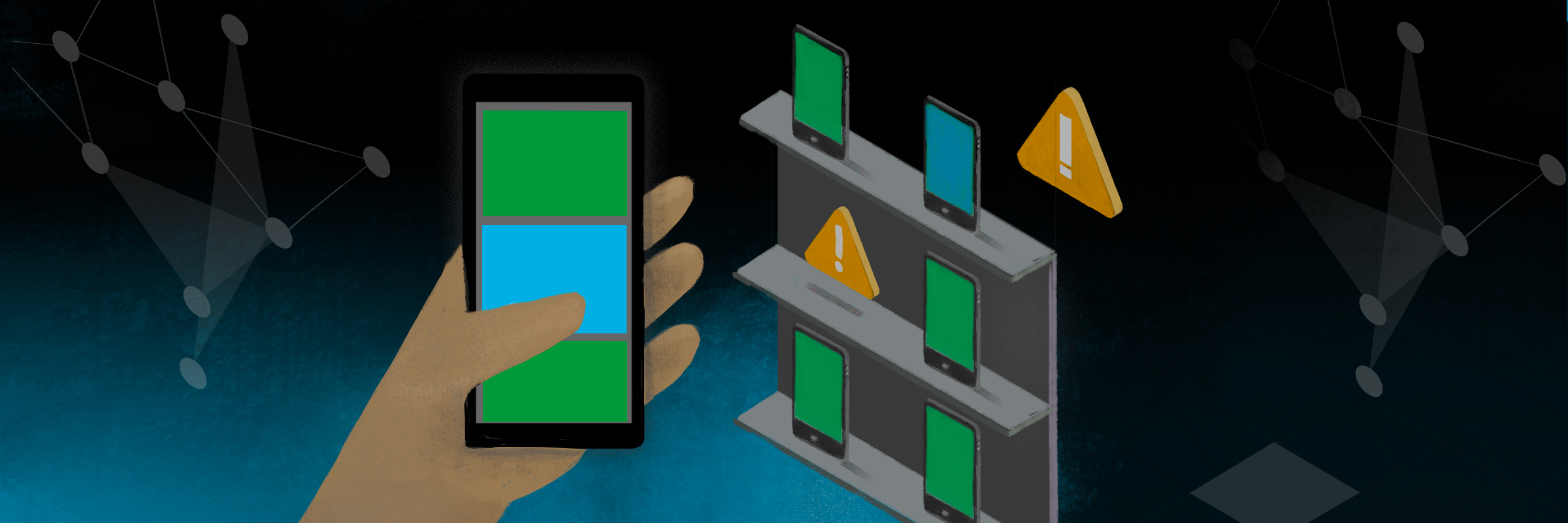Four Use Cases for How 5G Will Transform Enterprises
Here’s how to capitalize on our high-speed cellular future.
Every new 5G-enabled smartphone launch, it seems, comes with a frothy dose of predictions about how it will improve consumers’ lives. But all that chatter misses the point.
We’ve all heard about 5G’s promise to deliver blazing transmission speeds up to 100 times faster than current 4G technology, and with much lower latency rates and greater network capacity. Its biggest upside, however, is the business innovation it will inspire. From paving the way for truly smart factories and cities to transforming how remote and office workers do their jobs, 5G could end up being one of the biggest economic game changers of the decade.
Even as major wireless carriers are still lighting up cell towers across the U.S., many observers are talking about 5G’s greater economic potential. The World Economic Forum, for example, predicts that 5G will contribute $13.2 trillion to the global economy by 2035. And 86 percent of networking executives polled by Deloitte Insights say advanced wireless technology is likely to completely transform their companies within three years.
“This is the time for enterprise organizations to plan for how they will leverage 5G because, in most cases, they are going to have to change internal business processes to take advantage of the technology,” says Massimo Peselli, a vice president for Verizon’s Business Group Enterprise Market. “It will be a year or two before it affects anyone’s bottom line. But if companies sleep on it, someone else could come along and use 5G to disrupt their industry.”
How 5G will work
Taking advantage of 5G capabilities will depend on where users are situated and the frequency of signals they employ. 5G supports three frequency ranges, each with their own capabilities. Low band frequencies travel far but offer slower speeds. Midrange frequencies balance speed and distance. High band frequencies are fastest but are limited in range and don’t penetrate walls or office buildings particularly well.
The most important new revenue streams in 5G will emerge from these architectural changes and by combining many of these cutting-edge technologies.
Because major U.S. carriers are looking to roll out 5G as rapidly and widely as possible, they are focusing the bulk of their cell tower buildout on lower band frequencies. These will offer “good enough” speed and latency for most small businesses. More intensive enterprise applications are likely to use all three frequency ranges depending on the needs of specific applications. They will also draw in other digital technologies.
Most enterprises, for example, will continue using Wi-Fi internally because it’s inexpensive, easy to deploy and doesn’t require outside carriers, says Kishen Mangat, vice president of mobility and automation at Cisco. But that will change, he adds, as enterprise architectures shift from centralized hardware-based models to software-based network approaches, where apps and data can travel more efficiently across 5G infrastructure.
“The most important new revenue streams in 5G will emerge from these architectural changes and by combining many of these cutting-edge technologies,” says Mangat.
Below are four use cases for harnessing the power of 5G.
Enterprise workforces
Multiple studies suggest a large portion of the U.S. workforce will keep working remotely long after the pandemic ends. But they won’t necessarily be holed up at home. Many will start carrying fast and reliable 5G-enabled devices wherever they choose to work.
That has big implications for many industries. For example, 5G’s blazing speeds could supercharge the work of field sales teams. Reps can seamlessly integrate virtual reality presentations without herky-jerky hiccups, or quickly download current data or other information about customers from CRM systems onto their phones as they step into critical meetings with minimal load times.
5G will also accelerate task automation, ultimately driving gains in productivity, profits and revenues. As noted computer scientist Marcus Weldon, the CTO at Nokia and president of Bell Labs, noted in a Financial Times blog, 5G is expected to transform entire industries, “resulting in increased productivity, higher wages and new jobs.”

Retail
Once the burdens of the pandemic ease, and consumers return to stores, 5G will offer huge benefits for inventory management in the retail sector. Verizon is testing a “smart shelf” in a Sacramento, California, store that uses 5G-powered computer vision for inventory and analytics. A supporting application triggers an alert if an item is out of stock or misplaced on the shelf so staff can quickly restock to minimize lost sales.
The carrier says it’s able to gain insights into shopper behavior to advise marketing, merchandising and other decisions. Verizon is also imagining a day when a shopper could stroll up to items on a shelf, wave a secure smartphone in front of them and instantly view all sorts of details about the products. As Verizon Enterprise Solutions Group Vice President Michele Dupré noted in a recent blog, “5G should power next-level customer experiences and help customers stay better informed about their purchases and receive that information faster.”
Smart cities
One of 5G’s biggest promises is to help realize the vision of smart cities—sensor-driven towns, powered by automation and AI analytics, that will orchestrate a wide range of services, from traffic flow and power grids to social services and government functions.
Imagine city workers with 5G smartphones and laptops helping tax assessors pull up your records or social service workers help families in need. As Accenture noted in a 2017 report, the rollout of 5G infrastructure in cities could create 3 million new jobs and boost annual GDP by $500 billion, driven by a projected $275 billion in telecommunications operator investment over the next seven years.
“Cities are actively evaluating use cases and benefits of 5G for specific services as it will enable many smart city services to scale, making them faster and improving service quality,” says Ruthbea Yesner, vice president for government insights and smart cities research at IDC.
Manufacturing
Smart factories are already deploying sensors, machine learning applications, and other digital technologies to automate and improve factory floor efficiency and productivity.
Heavy-equipment makers like Caterpillar may soon be using 5G to power training seminars to familiarize factory workers with equipment and processes. Using company-issued smartphones, workers could watch instructional videos at home or on the job, correspond with remote instructors, exchange learning materials and team up with workers in other facilities as if they were right next to one another—all in real time.
Likewise, the company could sell remote maintenance services to customers. Using 5G along with onboard sensors and AI analytics, it could head off equipment malfunctions before they happen. This would save customers unplanned downtime and money while adding new revenue streams to the manufacturer’s coffers.
While workers and consumers will rightfully be enamored with 5G’s best-known benefit—speed—smart enterprise leaders should shift their attention to the place where 5G will soon show its true promise: the bottom line.
Illustrations by Kassandra Zuanich








